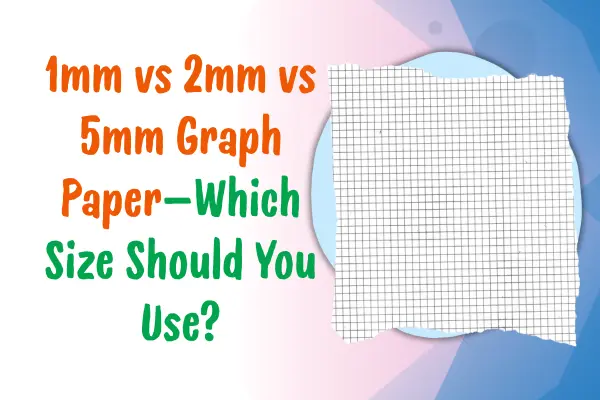If you’ve ever thought about publishing notebooks on Amazon, you’ve probably come across the term KDP interiors. These are the inside pages of your notebook—the part your buyers will actually write on. For many low-content publishers, creating a lined page KDP interior template is the very first step into the world of Amazon KDP publishing.
But here’s the thing: while it might sound simple, there are details you absolutely need to get right. From page size to margin settings, the way you design your notebook pages can make the difference between an amateur upload and a professional-looking KDP notebook that customers actually want to buy.
In this guide, I’ll walk you through everything you need to know about creating lined pages that are ready for KDP publishing. We’ll talk about lined page KDP interior templates, why they matter, how to create them step by step, and how you can make yours stand out in a crowded market.
What Is a Lined Page KDP Interior Template?
A lined page KDP interior template is basically a digital file, usually in PDF format, that contains the writing lines for your notebook. Think of it as the backbone of your notebook—it’s the design that repeats across all the inside pages.
When you create a notebook for KDP, you don’t upload 100 blank Word documents one by one. Instead, you create one consistent template of lined pages, and then it’s duplicated across however many pages you want in your notebook—whether that’s 100, 120, or 200 pages.
This makes your job much easier. Instead of worrying about formatting each individual page, you only have to design the template once.

Why Do You Need a Template for Lined Notebook Pages?
If you’re serious about publishing on KDP, you need a professional-looking lined page interior. Here’s why:
- Consistency matters. Your buyers expect evenly spaced lines and neat margins. If your pages look messy, it ruins the writing experience.
- Saves time. A reusable template means you don’t need to start from scratch every time you want to publish a new notebook.
- Higher quality books. Using a properly formatted template helps your notebook pass KDP’s file checks and ensures your interior looks crisp when printed.
- Customer satisfaction. Buyers notice quality. A sloppy notebook interior can lead to bad reviews, which can hurt your KDP business.
Choosing the Right Size for Your KDP Notebook
One of the first decisions you need to make is the size of your notebook. KDP supports a variety of trim sizes, but the most popular for notebooks are:
- 6 x 9 inches (perfect for everyday journaling)
- 8.5 x 11 inches (great for school or work notebooks)
- 5 x 8 inches (compact and portable)
When creating your lined page KDP interior template, always make sure the file size matches the exact trim size you’ve chosen in KDP. If your interior doesn’t align with the cover size, Amazon will reject your upload.

Setting Up Margins and Line Spacing
Margins are incredibly important in KDP notebooks. If your lines are too close to the binding, the notebook will look awkward and be difficult to write in.
- Inside margin (near the spine): Usually 0.75″ to 1″ is recommended.
- Outside margin: 0.25″ to 0.5″ works well.
- Top and bottom margins: Around 0.5″ is standard.
Line spacing also matters. You don’t want the lines to be too tight or too far apart. A good rule of thumb is:
- College-ruled lines: Around 7 mm apart.
- Wide-ruled lines: Around 8–9 mm apart.
Choose your spacing depending on the style of notebook you want to create.
Tools You Can Use to Create Lined Page Interiors
The good news is, you don’t need expensive design software to create your KDP notebook pages. Here are some options:
- Microsoft Word or Google Docs: Simple but effective. You can create tables or use line shapes to make your template.
- Canva: A beginner-friendly design tool where you can set custom dimensions and add lines.
- Adobe Illustrator or InDesign: Perfect if you want total control over layout and design.
- Online generators: Some websites offer free or paid templates that you can customize.
Regardless of the tool you use, the important part is exporting your final file as a print-ready PDF that meets KDP requirements.
How Many Pages Should Your Notebook Have?
This depends on your target audience. For example:
- Students or office use: 120–150 pages is a good range.
- Journals or diaries: 100–120 pages works best.
- Thicker notebooks: 200+ pages, but these can feel bulky.
Remember, KDP prints on both sides of the page, so if you upload a 120-page interior, your notebook will have 60 physical sheets of paper.
Adding Creative Touches to Your Lined Pages
While plain lined pages sell just fine, adding small design touches can help your notebook stand out. Here are a few ideas:
- Page numbers for organization.
- Headers or footers with motivational quotes.
- Subtle background designs like light floral patterns or abstract shapes.
- Custom line colors instead of the standard black.
These little tweaks give your notebook a unique feel and make it more appealing to buyers.
Testing Your KDP Interior Before Publishing
Before you upload your lined page KDP interior template, always test it. Here’s how:
- Export your file as a PDF.
- Open it in a PDF reader and flip through the pages.
- Check for alignment, margins, and consistent line spacing.
- Use Amazon’s previewer tool after uploading to double-check how it looks in print.
If you spot any issues, fix them before hitting publish. This prevents rejection and ensures your buyers get a professional product.
Scaling Up Your KDP Notebook Business
Once you have one solid lined page KDP interior template, you can reuse it for multiple notebooks. The only thing you’ll need to change is the cover design. This means you can publish different themed notebooks—school notebooks, gratitude journals, or aesthetic pastel notebooks—all using the same interior.
This is one of the reasons why low content publishing is so popular. You don’t have to reinvent the wheel every time. Just build a library of interiors and mix them with creative covers to scale your publishing business.
FAQs About Lined Page KDP Interior Templates
1. What file format should I upload to KDP for my notebook interior?
You should always upload your lined page interiors as a PDF file. KDP does not accept Word docs or image files for interiors.
2. Do I need to create every single page individually?
No. You only need to design one or two lined pages, and then duplicate them until you reach your desired page count.
3. What’s the minimum number of pages required for a KDP notebook?
Amazon requires at least 24 pages, but most successful notebooks have 100 pages or more.
4. Can I use free templates for my notebook interiors?
Yes, but be careful. Free templates are often overused, so if you want your notebook to stand out, customize them or create your own.
5. Do I need bleed or no-bleed for lined notebook pages?
If your lines go all the way to the edge, choose bleed. If they stay within the margins, choose no-bleed.
Final Thoughts
Creating a lined page KDP interior template may sound like a small step, but it’s the foundation of a successful notebook publishing business. By paying attention to details like trim size, margins, and line spacing, you can create professional interiors that customers love.
Remember, once you design one high-quality interior, you can repurpose it across dozens of notebooks, giving you the freedom to focus more on creative covers and marketing.
So, if you’ve been thinking about diving into KDP notebook publishing, start today by creating your first lined page template. With practice, you’ll quickly build a portfolio of low-content interiors that can generate passive income for years to come.

